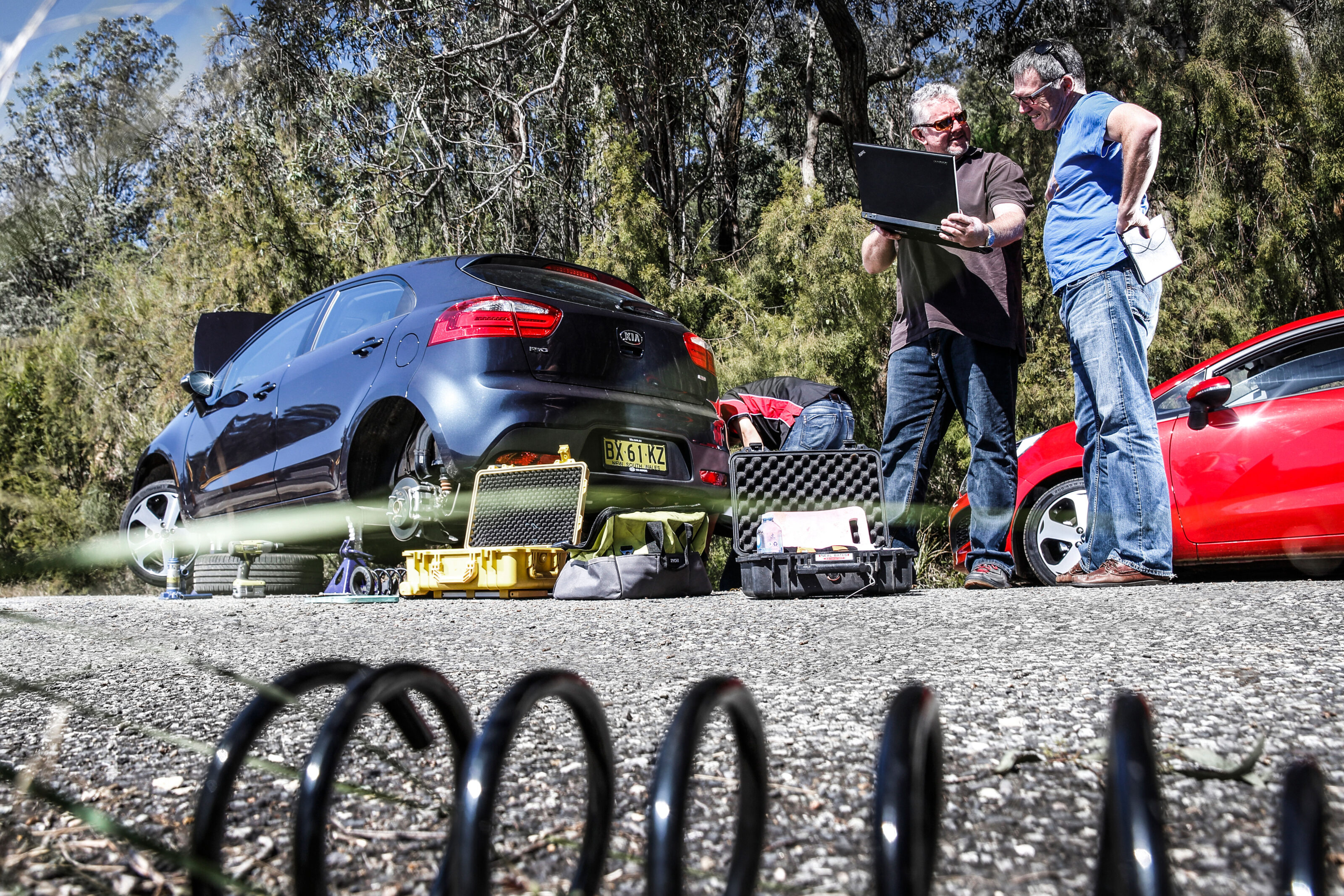“THUMP! Rattle! Bang! … Ooh! Argh! Crap!”
On a rough and scarred NSW country road a Kia Rio is doing its best to transmit every nook and cranny back through my body without a skerrick of filtering. It has the unlikely ability to be porn-star rigid on smaller inputs then wobble flaccidly on the bigger hits. It’s the worst of both worlds.
My pace declines to around 90km/h. The car feels like it is exceeding its capabilities going any faster. It’s hard to believe a simple combination of MacPherson struts and a torsion beam could be this bad.
Graeme Gambold looks across from the front passenger seat: “That’s just tragic, it’s unsellable.”
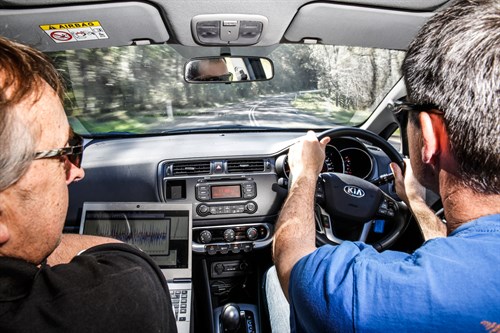
Considering Gambold is the independent chassis expert who has been consulting to Kia Australia since 2008 on its local suspension and steering development that’s quite an admission.
But he can afford to be brutally honest, because this is the “before” example of the just-superseded UB Rio, running on Korean domestic suspension tune.
If ever there was an answer to the question why Kia Australia has been going its own way on ride and handling in recent years then a short drive – and you’ll want to make it short – of this Rio provides it.
Gambold explains the Korean-spec Rio set-up is meant to be nippy and sporty with quick steering at the low speeds encountered in the car’s heavily urbanised home country. He talks about the roll couple distribution, or balance, of the car being rearward. It definitely doesn’t translate to Australian conditions.
“Because of the driving environment here – we have rough roads and high speeds – our roll couple distribution of the car is always forward … We try and go for a very firm front axle. All the European cars do that and they are the ones that drive well out here.”
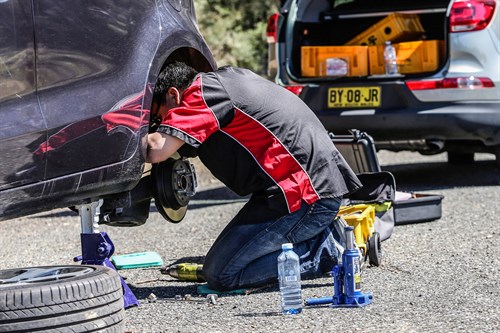
Gambold became involved with Kia’s chassis tuning when his former Toyota Australia colleague – and fellow rallying enthusiast – Steve Watt moved to the Korean company as marketing manager in 2008.
The rallying background is significant because it underpins their fundamental suspension set-up philosophy; make the ride more compliant and long-legged while tightening body control.
“That puts us into a unique tuning window and that means we extend the boundaries of our requests and go in quite a different direction from any other countries,” explains Gambold.
So different, Kia now classifies Australia as its own little separate ride and handling zone, alongside domestic, general market, North America and Europe.
On this warm late 2014 day Watt, Gambold, senior product manager Jeff Shafer – another Toyota refugee – and senior product planner John Kil have assembled together in the NSW Hunter Valley out near Wollombi to walk Wheels through their chassis development program.
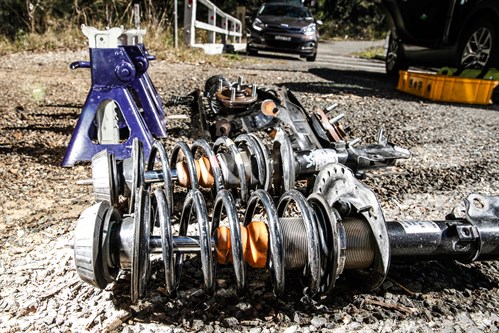
On this combination of rough, smooth, fast, slow, climbing and falling country highway the local team does its real-world shock absorber development work.
And with the facelifted UB-PE (product enhancement) Rio due early in 2015, Kia’s mini-car is the logical subject for this primer. Four different states of tune are here for us to try, all of them using the same optional 17-inch Continental Contisport Contact 3 rubber and driven by the 103kW 1.6-litre engine and six-speed auto.
Not that Rio is the only model in the Kia range to receive attention. The process started in a small way with some steering work in the first Soul back in 2009 and now touches all models in the range in some form or other.
Some of the Australian work has also been adopted overseas, most notably in the UK where road conditions quite closely reflect our own.
Kia is not the only brand that addresses ride and handling for Australia; local rival and global parent Hyundai has invested in this process, too. But most brands don’t.
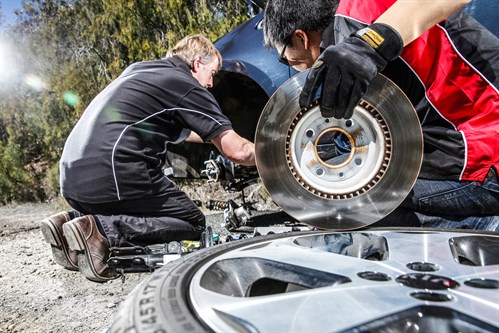
The Kia process starts with the identification of segment dynamic leaders and then a number crunch to see why they are so good. In the case of the Rio, that includes the likes of the Volkswagen Polo and Ford Fiesta.
The numbers for the Rio are also entered into Gambold-developed software and out spits an approximation of where its various settings need to be.
“We look at those numbers and I can see pretty much from them what the car will handle like,” Gambold explains as he points at graphs, curves and tables on his laptop.
“It’s pretty accurate; it will be understeery or oversteery. It will be stable, it won’t be stable, it will have good ride, it won’t have good ride.
“We temper all this stuff with how does it drive, how does it actually feel and tune accordingly. We use a balance of numbers, and subjective evaluation and experience.”
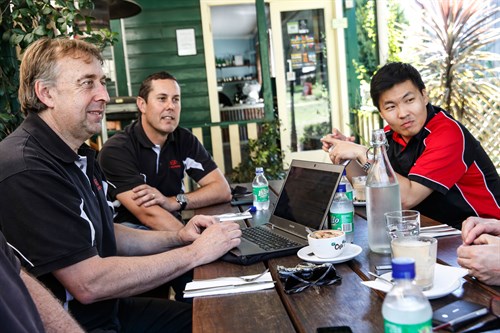
The first drive of the prototype in Korea at the giant Namyang proving ground inevitably reveals the car is some way from where the Australians want to be. But attaining the ideal dynamic target is not always possible. The basket of available tuning parts – shocks, springs and sway bars – may simply not take the car far enough.
The need to keep complexities on the assembly line minimised is one obvious limiting factor, but so is the cost of development.
“You’ve got to be careful you don’t ask for something that would require a retune of the ESP,” Gambold explains.
“That would require another winter test in New Zealand or Europe and a whole lot of other regulatory tests would have to be conducted. You’re talking teams of engineers and millions of dollars.”

Once prototypes arrive in Australia, suspension is dialled in an intense two week burst in the Hunter Valley, generally working through two to three options per day.
Finally, the steering is set. Thanks to electric assistance this is quickest part of the process. Experts arrive from Namyang, plug in their computers and play.
From first drive at Namyang to sign-off takes about six months. And out of the process, should come a decent driving car.
Time to find out.
Apart from the Korean spec UB we’ve already driven, there’s an Aussie spec UB to reacquaint ourselves with, a car with UB-PE settings to sample and something of a surprise – a local development mule that encapsulates where the locals really would like to be.
“I wanted to prove to Kia Australia guys how good the car could be with the right componentry, which is why we set about building that buck,” explains Gambold.
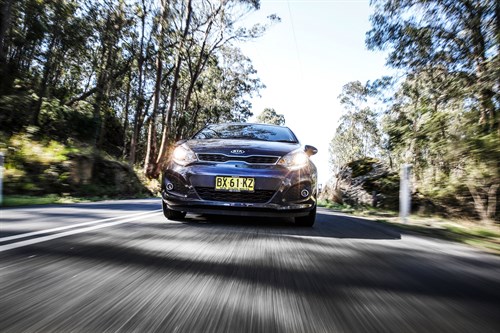
And Gambold’s point is proven in the driving. The “buck” runs the largest anti-roll bars and lightest springs of any of the four cars, and delivers the best ride and body control.
Its electric-assist power steering has been made faster and is the most positive and has the least friction.
The buck dives into corners, sits flat, holds it line, rides the bumps and delivers feedback. I’m quickly wishing for more power and flappy paddles.
At the core of the buck is a simply clever adjustment that allows the stiffness of the torsion beam rear axle to be varied. From that, appropriate anti-roll bar thickness and spring weights can be established.
“The strength in the rear improves the behaviour in the front,” explains Gambold. “It doesn’t have the lateral weight transfer variance.
“The stiffer rear torsion beam allows us to run a lighter spring rate, which takes the mid- corner jacking action or energy out of the inside rear. So as the car weights it doesn’t get pushed up by the spring rate.
“Confidence, security, engagement – those are the things you really want from a chassis.”
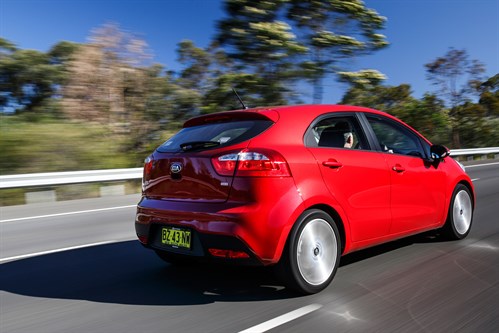
And you can feel what he’s talking about in each of the other cars. The Korean UB is – we know – crap. The Aussie UB is a much better drive with a more compliant low-speed ride and better body control. But the power steering tune is wooden and the ride on the 17-inch Contis poor.
The UB-PE is another step forward, although lacking the same sheer authority of the buck. It benefits from a steering upgrade from 16 to 32-bit processor and having local tuning of the 17-inch tyre (something the UB missed out on) and a spring, shock and anti-roll bar set-up closer again to what the Aussies want.
It drives confidently and smoothly, even enjoyably. But whether all this work on Rio and the rest of the Kia range does anything for profitability is another question.
“It’s a longer play,” Watt admits. “I don’t know if we can look at it as a direct correlation to sales today.
“The reason we went down this path is because it is something we identified relatively early on as something we could change that could give us an edge in this market and longer term help us with that customer who was alien to us before – a customer who likes having a drive of a car.”

